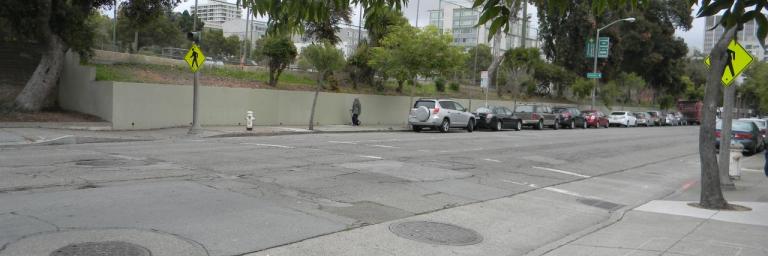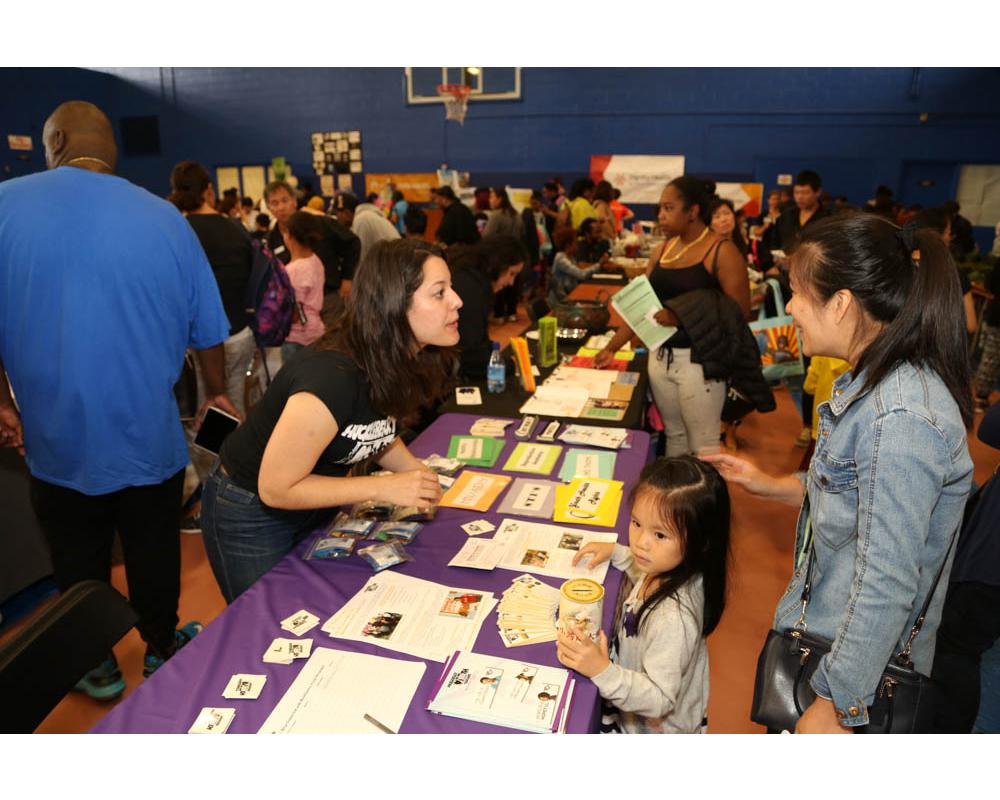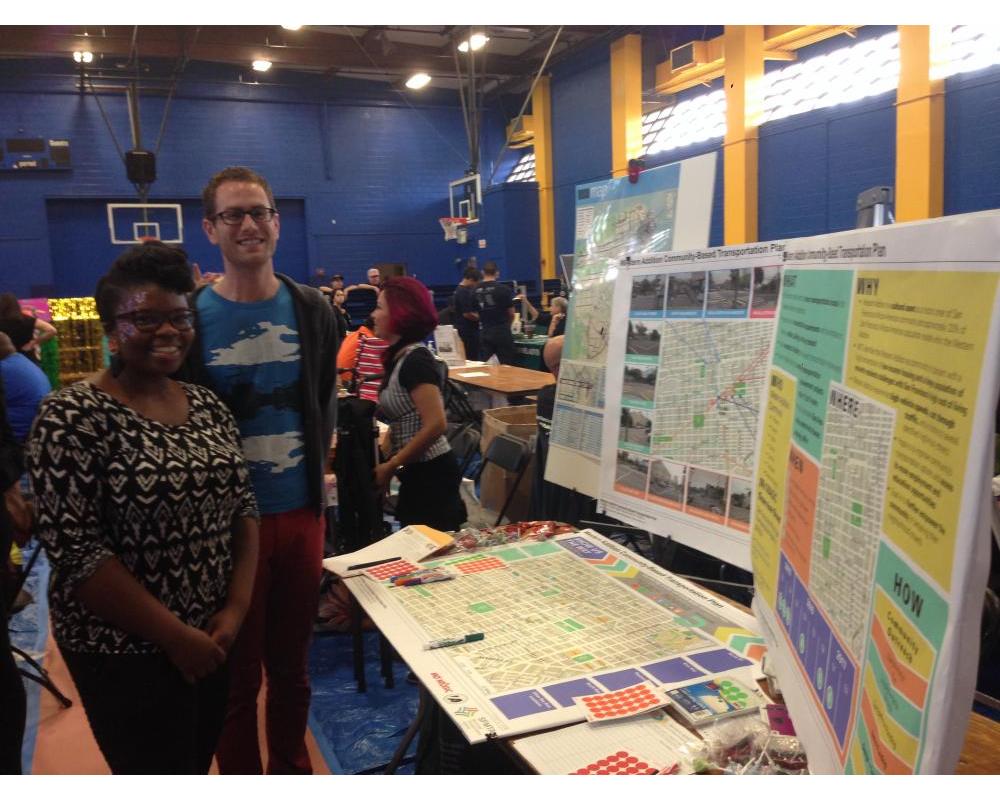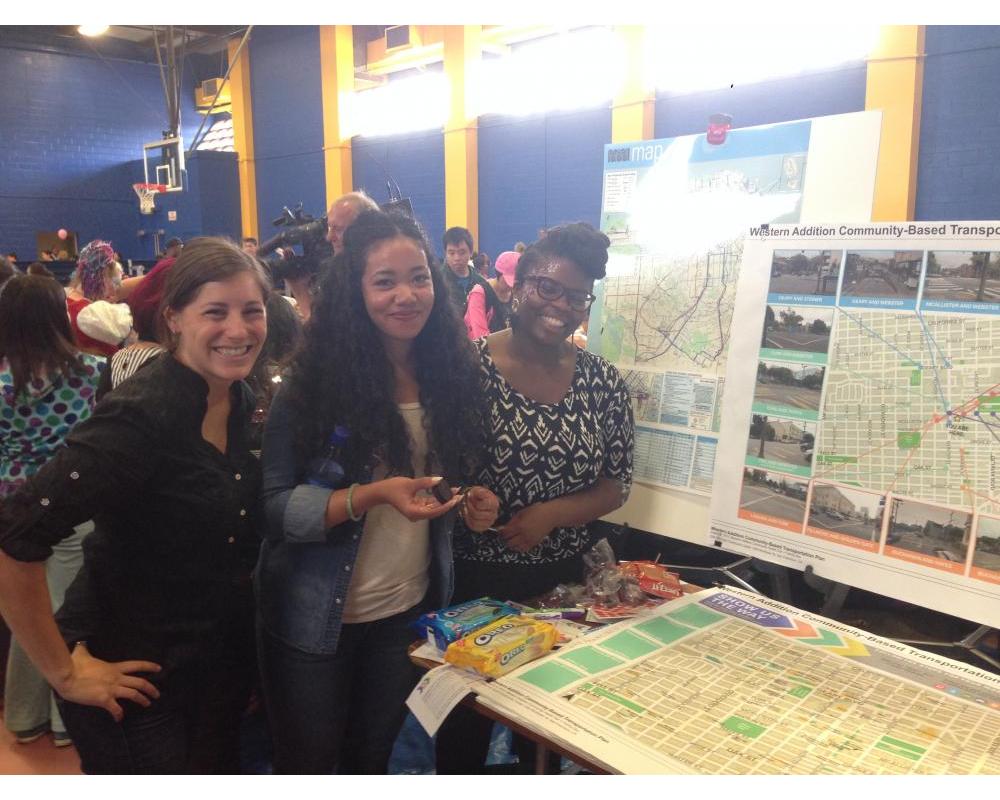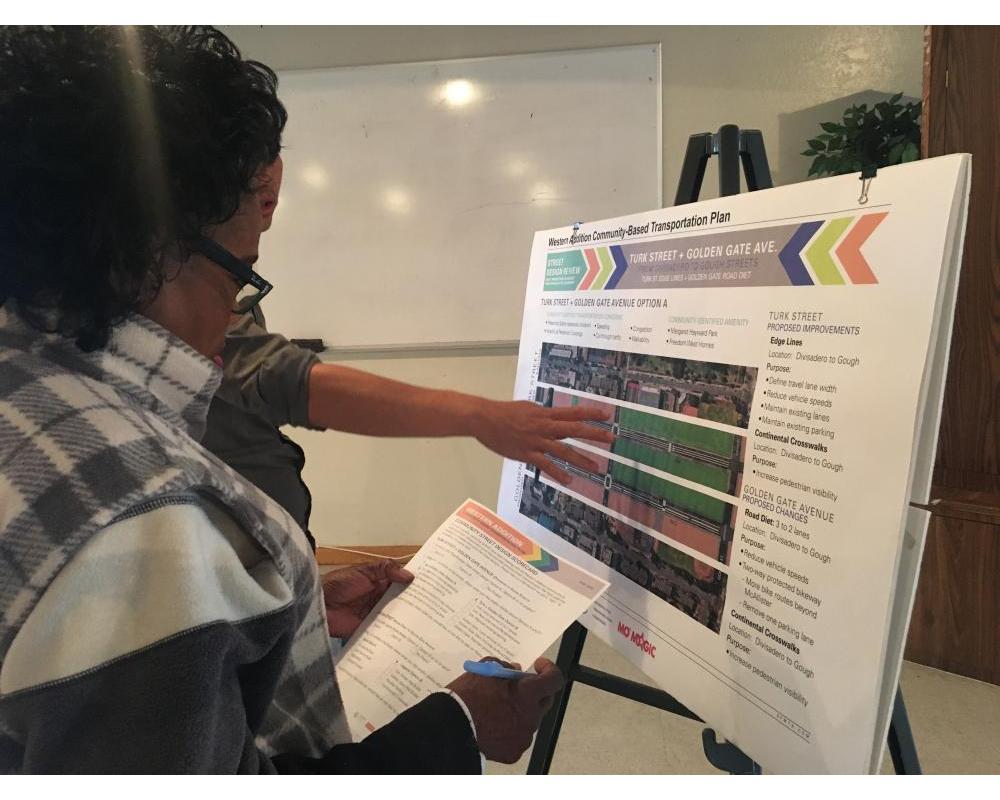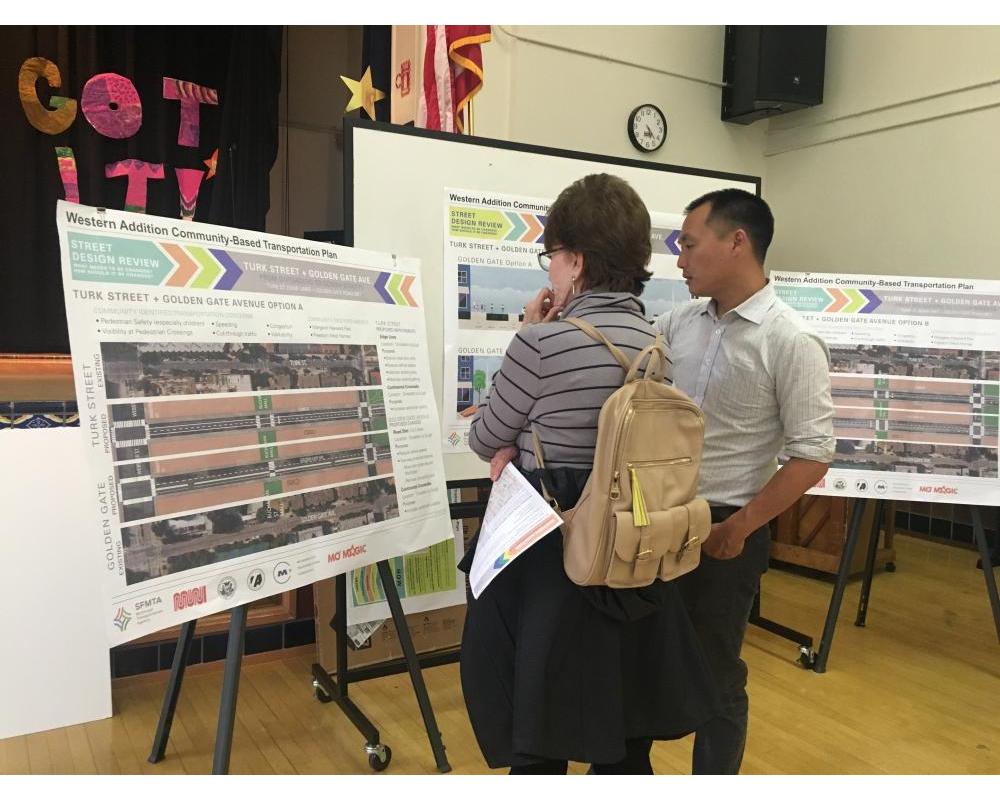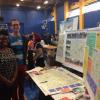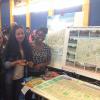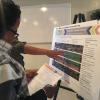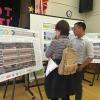The Western Addition Community Based Transportation Plan (WACBTP) evolved from the Bay Area-wide Community Based Transportation Planning Program, born from the Lifeline Transportation Network Report and the Environmental Justice Report. The WACBTP emerged as a process for empowering the Western Addition community to improve mobility and access in their neighborhood. With close collaboration between MTA Planning and Livable Streets, the Plan included community outreach components, project feasibility, with community-driven prioritization and phasing to deliberately pursue pedestrian safety at designated intersections and corridors. Promoting equity in low-income communities of color was a key tenet of the Plan.
Implementation of near-term improvements was kicked off in the spring of 2018. Some crosswalks, advanced limit lines, traffic signal installation and upgrades have already been implemented throughout the year. The project is currently still in the near-term implementation phase with full construction of near-term improvements anticipated late 2021.
The Transportation Authority board has allocated $300,000 in Neighborhood Transportation Improvement Program funds to SF Public Works to complete the Buchanan Mall Bulbouts Project at the request of Transportation Authority Board Member Dean Preston (District 5). The project will design bulbouts to improve pedestrian safety and walkability at the intersections of Buchanan Street and Golden Gate Avenue as well as Buchanan Street and Turk Street, which are streets that intersect Buchanan Mall. The project's design phase will be completed by December 2020.
- Current
The Western Addition is one of five neighborhoods in San Francisco identified as a Community of Concern by the Metropolitan Transportation Commission (MTC) in 2002. In response, the SFMTA led a robust community engagement process in collaboration with the community organization Mo’MAGIC to examine transportation improvements in the Western Addition with an emphasis on improving walking, biking, and taking transit. The process included transportation analyses and extensive community engagement to develop a list of resident supported improvements.
OVERVIEW
Currently, the WACBTP is in implementation phase, with goals defined for the near-, mid, and long-term.
• Near-term: Quick, effective pedestrian safety improvements for 41 community-identified, high-injury intersections.
• Mid-term: Traffic signal upgrades and enhancements like leading pedestrian intervals, pedestrian countdown signals, and flashing lights are planned for community identified intersections.
• Long-term: Capital projects will promote safe access to neighborhood recreations like Margaret Haywood Playground
